June is LGBT+ Pride month, and it also marks the month of the third annual Los Angeles-based Queer Biennial, founded and curated by Ruben Esparza, which opened on June 1, titled “What if Utopia?” I have to admit that I am disappointed by this queer biennial, unlike the prior year’s that I praised for its inventiveness and intriguing images and performances—even as it reckoned with the heavy topic of HIV/AIDS from an older and younger generation of artists. What could have been an interesting and engaging exhibition exploring utopia, seems like a missed opportunity. This is not to say there are not some solid works in the exhibition, which was held at NAVEL and Last Projects in Los Angeles.
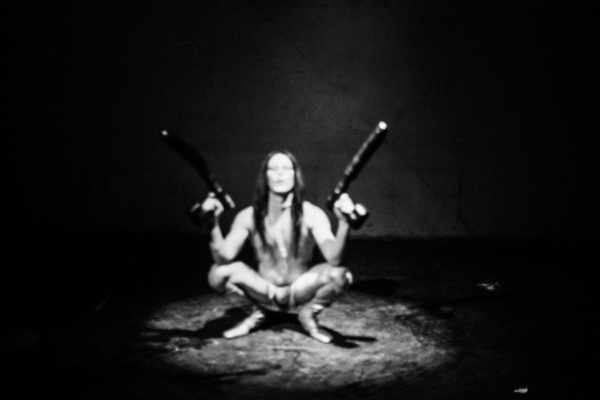
Matt Lambert, Untitled (Christeene in “Butt Muscle” performance/video), 2016
Highlights include Alex Sanchez, with his queer, abstract formalist work of black canvases seemingly dripping in thick paint; Dakota Noot and his interspecies bodies of some other worldly place both at Last Projects. In NAVEL, the main gallery, there were stunning artworks by Matt Lambert, Craig Calderwood, Gil Yefman and Homo Riot, as well as brilliant queer performances by Peter Kalish and Marval A Rex—which dealt with a queer dystopia: a reclaiming of dystopia as not inherently “bad”—but rather queerly generous, explorative and imaginative: queer. I highlight these artists because their work is the most provocative, or “queerest,” if you will, and their refusal to directly address the topic: “What if Utopia?” For example, Lambert’s portrait of trans performance artist and musician, Christeene Vale, which is imbued with a dark and perverse (for the patriarchy) eroticism and sexuality; this work ties into Homo Riot’s graphic, site-specific work around sorcery and homosexuality.
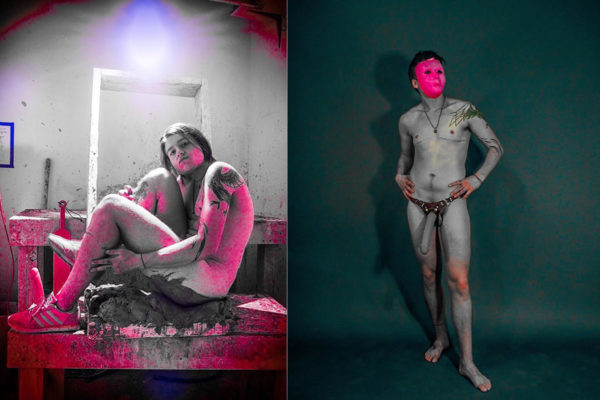
Marval A Rex, Performance artists at Opening night of Queer Biennial: What if Utopia?
The press release stated that there would be, and there were, the works of Haring, Warhol and Mapplethorpe—not to mention an appearance by John Waters—who also seemed confused by the exhibition—all of which seemed as a tactic to bring in an audience, rather than aid in visually exploring and/or articulating any kind of utopia.
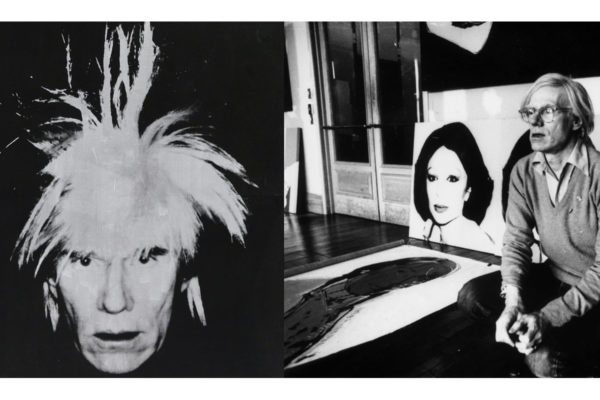
Andy Warhol, Photographer Unknown, no date (circa 1980)
But here, it must be stated that a (queer) utopia does not guarantee it will be it will be a better place: queer lacks essentialism and any kind of stable structure or solidity. Utopias, first articulated by Sir Thomas More, have always failed either through disagreements or the turning toward authoritarianism—if not dictatorship. This is not to say any of the artists would promote or support such regimes, but it does mark the beginning of a critique of the show as the curators failed to curate an exhibition that explores (queer) utopia, visually.
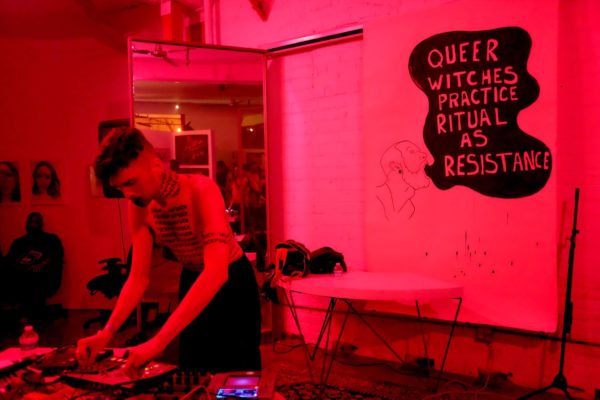
Peter Kalish (Noise Pup), Performance artists at Opening night, artwork by Homo Riot behind Kalish
The title “What if Utopia,” surfaces, for me, an anthology edited by Michael Warner, Fear of a Queer Planet (1993), in which many essays surfaced “queer utopia,” and later, Michael Snediker’s Queer Optimism (2008), which is a movement away from queer theories that were invested in anti-relationality and intersubjectivity. Similarly, it evokes Jose Muñoz’ Cruising Utopia (2009), which is a critical rethinking of not only queer theory but also a hopeful text, a provocation that counters the effects of queer nihilism through an effective approach of critical idealism—in which he brilliantly draws on performance and visual art to make his points. Indeed, a text that would have enabled the curators to imagine this show by pushing Muñoz’ ideas, visually—or even sought out artists transforming or rethinking Muñoz’ queer utopia, which, just like queer, is only ever arriving.
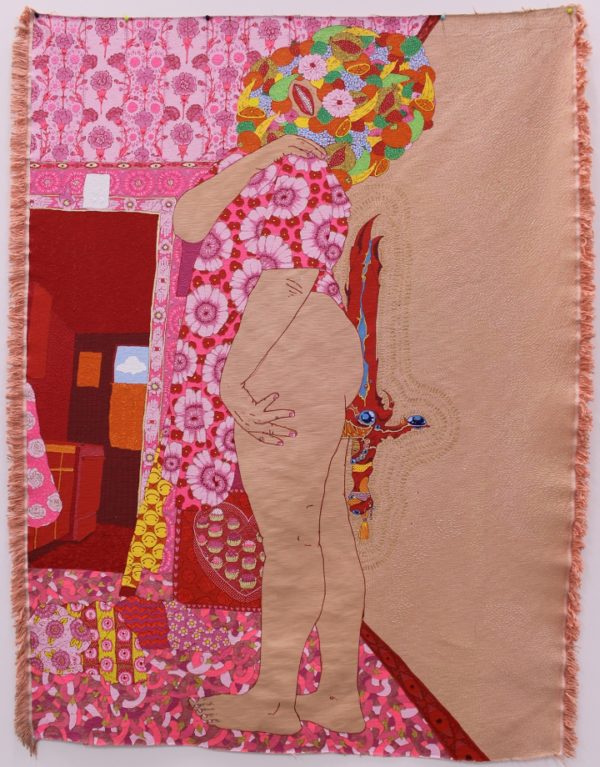
Craig Calderwood, Untitled (Immature), 2018
Esparza seemed to have skipped the research and voluminous literature of the various ideas of utopia—especially queer utopia. Exploring pasts exhibitions—for example, “Looking Otherwise” (2009), “In a Different Light” (2005), “Against Nature” (1988), and more, which either explicitly or tacitly reckoned with queer utopia would have given the shows more substance. Thus, curatorial scholarship is missing. Ironically, the exhibition was brimming with cis, gay, white men—with the exception of a few token LGBT+ people of color and no queer feminists.
A gay, or LGBT art show is fine, and even worth doing, but to call it queer does a disservice to us all. Here is one thing that I remain highly critical of: the confusion of gay, lesbian, and/or LGBT for queer. We must, for politico-theoretical reasons, maintain the difference between the two. I do have hope that the next Queer Biennial will be one of and in the movement of queerness, in its visuals, performances and curatorial statement.
Queer Biennial: “What If Utopia?”
June 2 – August 2
Navel and Last Projects in Los Angeles
June 1 10 July 1
queerbiennial.com



















0 Comments